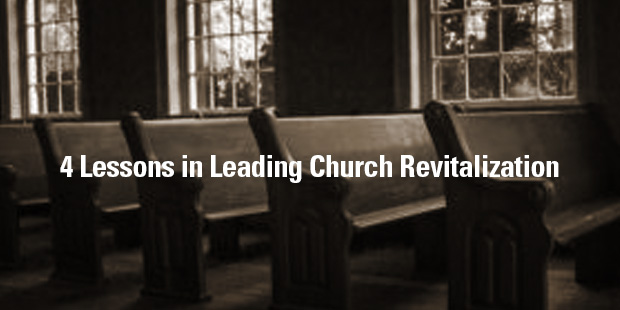Church revitalization is a very real and important topic to many today because statistics indicate that the majority of churches are plateaued or declining. So, since the majority of churches are not growing, if you’re a church leader, pastor, or Christian leader reading this you’re probably in a church that needs revitalization.
Thom Rainer says:
Nine out of ten churches in North America are declining, or they are growing slower than the community in which they are located. Nine out of ten churches need revitalization.
Because of the large number of struggling churches, many people think we should focus on church planting. Others think we should look for new ways to fulfill the mission, such as in missional incarnational communities.
Both of these expressions are good and vital. But there are many churches that are simply in need of revitalization. I am a big proponent of revitalization. I have been involved in such projects as a pastor, and have researched and written about the process as well.
Why outward focus?
Various factors contribute to a transformational church. You can find some of those in the book Transformational Church. One of the things you will find in churches that are growing disciples and growing numerically is an emphasis on outward focus. It is so integral that outward focus should be a part of revitalizing a church.
When a congregation is engaging in ministry and mission it causes people to live not for themselves, but, to quote 2 Corinthians 5:15b (HCSB), “for the One who died for them and was raised,” they become again who God designed them to be. When a group of such people are gathered as God’s “called out” ones, they can revitalize a church.
One of the reasons churches are stuck and stagnant is because they have for years pandered to the consumerist mentality of Christians. Then we’re shocked and surprised when people act like customers rather than co-laborers.
A pastor in a plateaued or dying church may ask, “How can a renewed outward focus be a key part of a church revitalization?” or, “How can we turn our church outward?”
Gospel revitalization
One consideration is the issue of gospel proclamation and gospel demonstration. I want us to see gospel proclamation as telling people that Jesus died on the cross for our sins, and men and women can trust and follow Him by grace through faith. But I want us also to see gospel demonstration where people live out the implications of the gospel in their community.
Proclamation and demonstration, or message and ministry, are inseparable.
The proclamation and demonstration of the gospel message are two sides of the same coin. If you want to revitalize a church, gospel revitalization will be central to that.
Revitalized churches live the gospel in both word and deed. I have led churches through this process. If a church is to experience revitalization, the people must begin to think less about themselves and more about God, His glory, and His mission.
When people are focusing on that objective, and when they’re serving and ministering to others who are hurting and in need, we’ve learned they’ve got more time for ministry and less time to engage in drama.
Outward focus can solve inner problems
Confucius said: “He who rows the boat has no time to rock the boat.”
(Confucius didn’t say that, but somebody did and it’s true!)
An outward focus can avert church conflict. Instead of having a room full of customers demanding church their way, the music their way, the pastor their way, you have a room full of co-laborers who are receiving training to live out the mission of God.
When churches are living with this outward focus, they’re telling the good news of Jesus Christ. But they’re also engaging people in ministry and mission within the church and mission outside the church. Both of these things are taking place: engaging ministry inside and outside. There’s gospel proclamation and gospel demonstration.
Telling the message is part of living the message
One of the things that we found in research is that people in healthy churches don’t just proclaim the gospel because they are told they should. Rather, it is a natural part of the life of the church.
Evangelism in transformational churches is not viewed as an activity done by a few while everybody else watches. A church needing revitalization needs to understand that evangelism is not a spectator sport.
Christians love evangelism as long as somebody else is doing the work. But in transformational churches, those that were experiencing this revitalization and focus have owned the sharing of the gospel. And the church has often made a conscious decision that their existence is seeing people reconciled to God through Christ. So we see this focus and these practices along the way.
Sharing the Gospel defines us
We have increasingly seen in churches that are growing through conversion, that they were active, even aggressive, about servicing and engaging in their community. That activity was part of their DNA. Church membership even felt the ministry impact.
Transformational churches have a different perspective on church membership. More than signing a card and joining a church, membership in a healthy church often equals a commitment to serve both the church and the community.
Christ followers should be part of a community called church that is facing outward. This outward focus moves into the community with a certain passion for “sentness.”
> Read more from Ed.
Would you like to learn more about an outward focus for your organization? Connect with an Auxano Navigator and start a conversation with our team.

Tags: Church Revitalization, Ed Stetzer, Inward Focus, Inward Problems, Outward Focus
|
What is MyVisionRoom? > | Back to Execution >






















